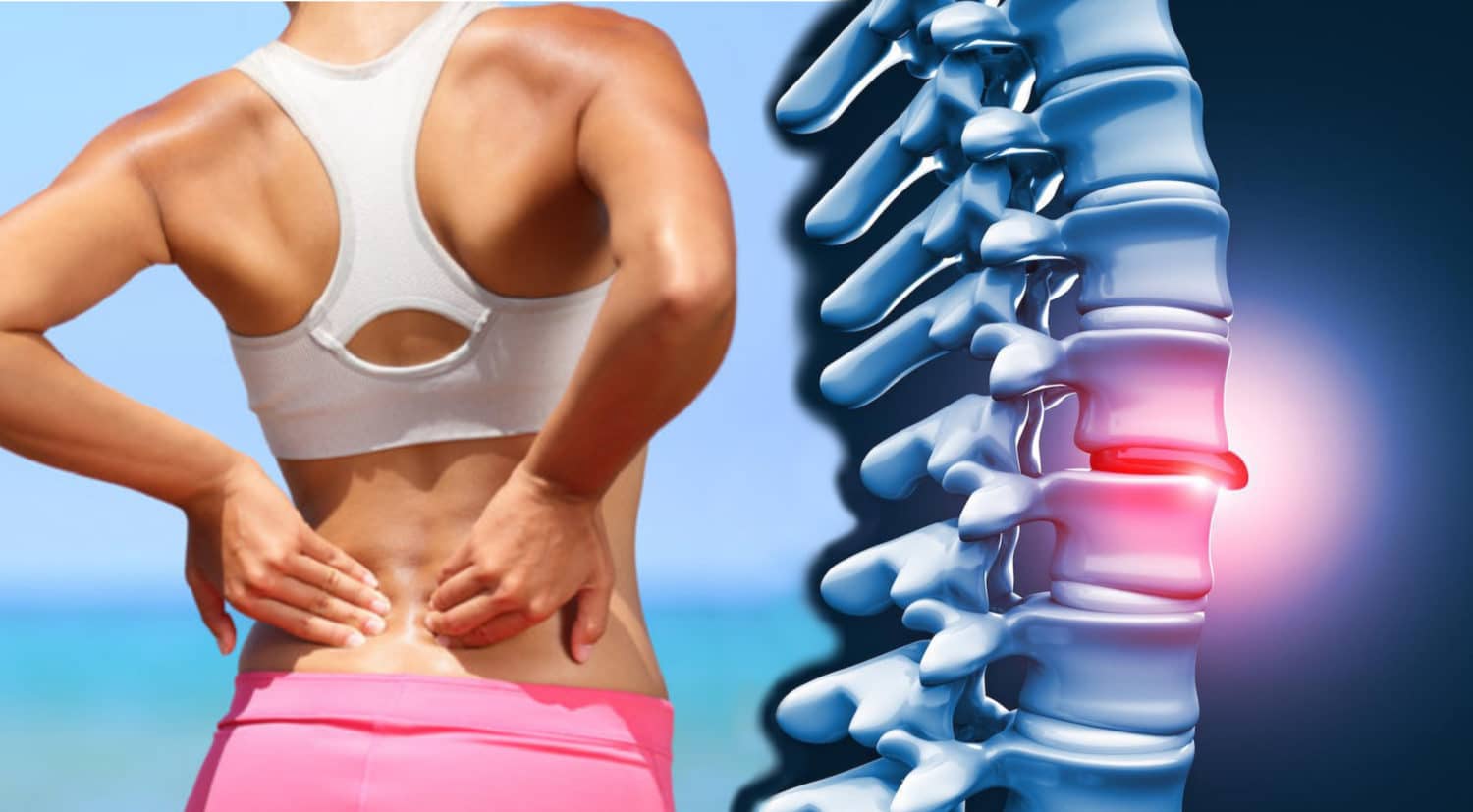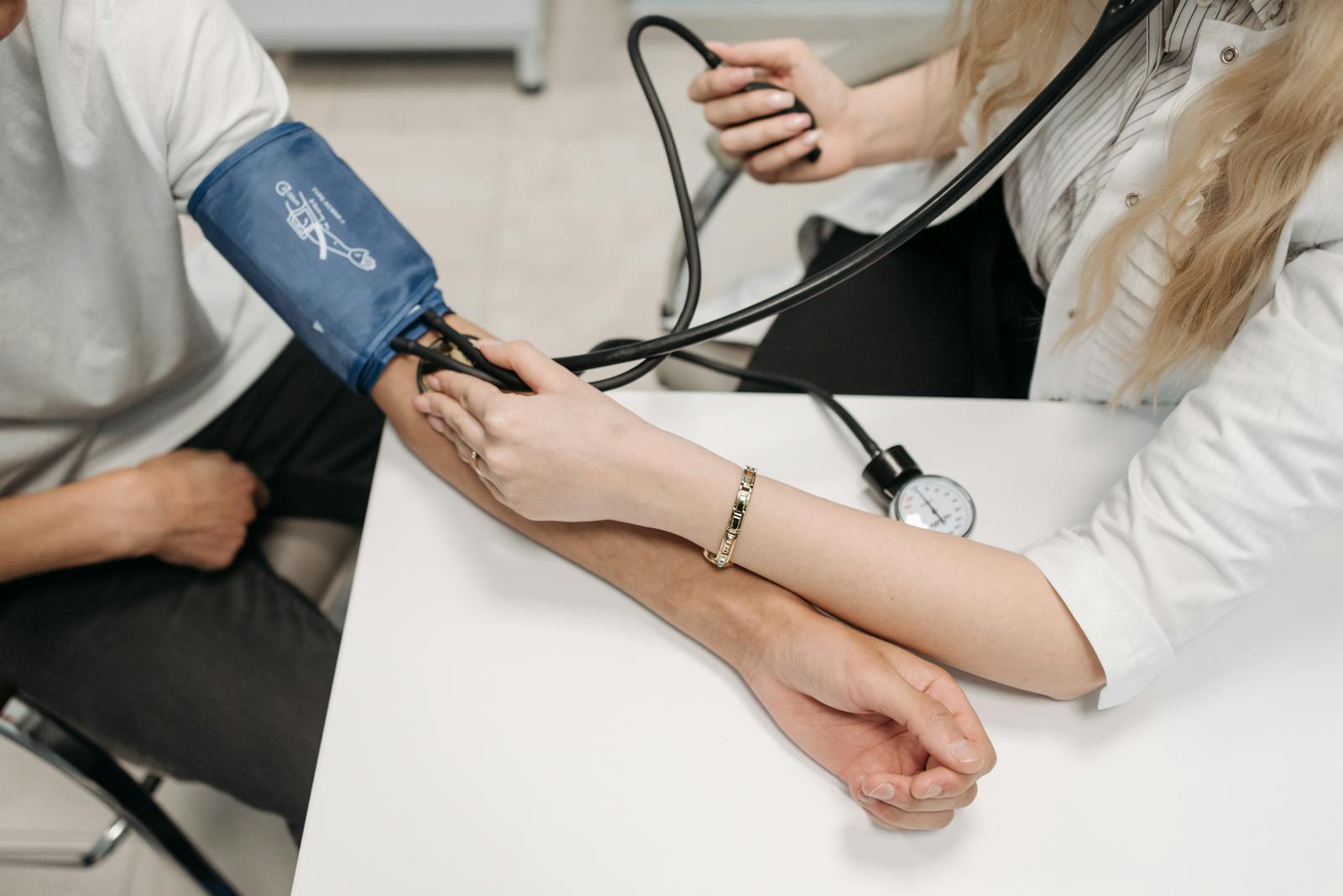The early signs of a herniated disc can often be subtle, but if caught in time, they can prevent more severe issues down the line. As the disc deteriorates, symptoms such as back pain, numbness, or weakness in your limbs may begin to manifest. While these symptoms can be common in many conditions, understanding the unique patterns and characteristics related to a herniated disc can be important in pinpointing the problem. So, how do we identify these early signs, and when should you seek medical attention? Let’s explore further.
Understanding a Herniated Disc
To fully grasp the early signs of a herniated disc, one must first explore an understanding of what exactly constitutes a herniated disc in the medical field. The human spine is composed of 33 interlocking bones, known as vertebrae, which are cushioned by discs. These discs are composed of a tough, fibrous outer layer (the annulus fibrosus) and a gel-like inner layer (the nucleus pulposus). Together, these layers form the disc anatomy.
A herniated disc, also known as a ruptured or slipped disc, occurs when the nucleus pulposus leaks out through a tear in the annulus fibrosus. This leakage can irritate nearby nerves and cause symptoms such as pain, numbness, or weakness in the limbs.
Rehabilitation exercises are often a key component of treatment for a herniated disc. These exercises aim to strengthen the muscles surrounding the spine, improve flexibility and mobility, and promote proper posture and body mechanics. They can also help to alleviate symptoms and prevent further disc damage. However, one must emphasize that these exercises should be customized to each patient’s specific condition and should be performed under the guidance of a healthcare professional.
Common Causes of Herniated Discs
Having explored the anatomy and implications of a herniated disc, it’s important to turn our attention towards understanding the common causes that can lead to such a condition. Ageing is the most significant cause, as the discs in the spine naturally degenerate over time, losing flexibility and resilience. This process, referred to as disc degeneration, can be accelerated by factors such as genetics, obesity, and physically demanding occupations or activities that place significant strain on the back.
Disc degeneration prevention is largely about mitigating these risk factors. Lifestyle adjustments can play a critical role in this regard. Regular exercise, maintaining a healthy weight, and using ergonomic furniture can help reduce the stress placed on the spine. Similarly, refraining from tobacco and controlling alcohol consumption can also contribute to spinal health.
In some cases, herniated discs may result from a traumatic injury, such as a fall or accident. However, these instances are relatively rare compared to degenerative disc disease. Regardless of the cause, seeking immediate medical attention when experiencing symptoms associated with a herniated disc, such as back or neck pain, numbness, or weakness, is essential.
The Importance of Early Detection
Recognizing the early signs of a herniated disc is of paramount importance, as it can expedite diagnosis, treatment, and potentially minimize the risk of long-term damage to the spine. Early detection involves keen observation of symptoms, utilization of detection methods, and implementation of preventive measures.
Being proactive about your spine health can lead to several benefits:
- Prompt diagnosis: Quick identification of symptoms can lead to an early diagnosis, preventing the condition from worsening.
- Efficient treatment: An early diagnosis allows for timely treatment, improving the chances for full recovery.
- Preventive measures: Understanding the signs and symptoms allows individuals to take preventive measures to avoid further damage.
- Avoiding spine surgery: In some cases, early detection can help manage the condition with non-surgical treatments, avoiding the risks associated with spine surgery.
- Enhanced quality of life: Minimizing the risk of long-term spine damage can significantly enhance an individual’s quality of life.
Identifying Pain Patterns
Delving into the domain of pain patterns, it becomes apparent that these can serve as crucial indicators of a herniated disc, with patients often experiencing distinct types of discomfort in specific areas. Pain Localization plays a significant role in discerning the presence of a herniated disc. Generally, a protruding disc in the lower back can cause pain that radiates down the legs and into the feet, while a herniated disc in the neck might lead to pain in the shoulders, arms, and hands.
Additionally, Nighttime Discomfort is another critical pattern to notice. Patients with a herniated disc often report aggravated pain during the night. This could be due to the lack of movement, which increases pressure on the disc, or due to the body’s natural healing processes that occur during sleep, potentially causing inflammation and hence intensifying the discomfort.
Sensitivity to Movement
A herniated disc often triggers heightened sensitivity to physical movements, leading to sharp, sudden pain during routine actions such as bending, lifting, or even coughing. This is also known as movement intolerance, which is a clear sign of abnormal disc positioning. As a disc becomes herniated, it moves from its normal location, causing pressure on surrounding nerves. The nerve compression results in an increased sensitivity to movement.
To better understand this, consider the following key points:
- Movement intolerance is often the first sign of a herniated disc.
- Disc positioning greatly impacts the severity of movement intolerance.
- Sudden, sharp pain during physical activity is a common symptom.
- Routine actions such as bending and lifting may become difficult.
- Pain can intensify with movements like coughing or sneezing.
Being knowledgeable about these early signs can aid in timely diagnosis and treatment of a herniated disc. It is important to seek medical attention if you experience any of these symptoms, as this condition can worsen over time, leading to more severe symptoms and complications.
Numbness and Tingling Sensations
Numbness and tingling sensations are common symptoms that may indicate a herniated disc. These symptoms often manifest in the limbs and are not always innocuous, necessitating a deeper understanding of their implications. By correlating these sensations with disc herniation, we can enhance our ability to detect this condition in its early stages.
Understanding Numbness in Limbs
One of the most prevalent early signs of a herniated disc is a sudden onset of numbness or tingling in the limbs, often indicative of nerve irritation or damage. This condition, known as peripheral neuropathy, frequently presents as a sensation of ‘pins and needles’ particularly in the hands or feet.
When considering a Numbness Diagnosis, it’s crucial to understand the nature of these Limb Sensations:
- They may come and go, or be persistent
- The sensation can range from slight discomfort to severe pain
- Often, it is accompanied by weakness or muscle atrophy
- It may affect just one limb, or multiple
- The numbness usually starts at the extremities and progresses towards the center.
Understanding these signs can help individuals seek timely medical attention, potentially preventing further damage.
Tingling: Not Always Innocuous
While the sensation of tingling or numbness in the limbs may initially seem benign, it’s important to not dismiss these symptoms, as they could potentially indicate the presence of a herniated disc. Tingling triggers may vary from person to person; however, common culprits include prolonged periods of sitting or standing, sudden movements, and even sneezing or coughing. These triggers can exacerbate the pressure on the nerve, causing the tingling sensation. The neurological implications of these symptoms are significant and should not be overlooked, as they indicate nerve irritation or damage. A herniated disc can compress the spinal nerves, leading to these sensations. Therefore, persistent numbness or tingling, especially when associated with certain triggers, warrants immediate medical attention.
Disc Herniation Symptom Correlation
In relation to a herniated disc, the correlation of symptoms such as numbness and tingling sensations is both significant and revealing of the degree of nerve involvement. These symptoms are indicative of nerve compression, often caused by a herniated disc impinging on the nerve roots.
- The onset of such symptoms should not be ignored as they could be early signs of disc degeneration.
- Timely detection can facilitate Disc Degeneration Prevention strategies.
- Non Surgical Interventions like physical therapy and lifestyle modifications can be effective.
- Pain management can be achieved through non-invasive methods.
- Regular follow-ups with a physician can monitor the progress and prevent further deterioration.
It’s critical to understand these symptom correlations to ensure prompt intervention and prevent irreversible nerve damage.
Weakness in the Affected Area
An individual experiencing a herniated disc may often notice a certain weakness in the area affected by the condition. This weakness is typically a result of nerve compression caused by the herniated disc, leading to a diminishing control over the muscles in the affected area. The impact of this weakness can vary, ranging from a slight feeling of discomfort to a considerable reduction in strength, potentially affecting daily activities.
One of the critical consequences of this weakness is muscle atrophy. As the nerves controlling the muscles become increasingly compromised, the muscles may begin to deteriorate due to lack of use, resulting in muscle atrophy. This can lead to further functional impairment and exacerbate the initial weakness.
Alongside muscle atrophy consequences, there is also the risk of progressive mobility loss. As the herniated disc continues to compress the nerves, it can lead to a gradual decrease in mobility. Over time, this can result in significant difficulty or inability to move the affected area, compromising the individual’s quality of life. Recognizing and addressing these early signs of a herniated disc is important to prevent further complications and ensure effective treatment.
Unusual Reflexes
Beyond the noticeable weakness in the affected area, another early sign of a herniated disc can manifest as unusual reflexes. Reflex testing is a critical part of diagnosing this condition, as it helps medical professionals identify any reflex abnormalities, which can be indicative of nerve damage caused by a herniated disc.
Unusual reflexes can manifest in various ways, including:
- Delayed response times: Patients might experience a lag between a stimulus and their physical response.
- Hyperactive reflexes: Reflexes might be excessively brisk or exaggerated.
- Hypoactive reflexes: Reflexes might be abnormally weak or absent.
- Asymmetrical reflexes: Different reflex responses on the opposite sides of the body.
- Unusual sensations: Patients might experience abnormal sensations like tingling or numbness during reflex testing.
Each of these unusual reflexes is a potential red flag, signaling the need for further investigation. However, it is important to remember that the presence of these signs alone does not confirm a diagnosis of a herniated disc. They should be considered in conjunction with other symptoms and diagnostic tests to guarantee an accurate diagnosis and effective treatment plan.
Bowel or Bladder Dysfunction
While less common, yet profoundly concerning, bowel or bladder dysfunction can also be an early sign of a herniated disc. This symptom arises when the herniated disc impinges on the nerves that control these functions. The result can be a range of incontinence implications, from difficulty in starting or stopping urination to fecal incontinence.
Incontinence due to a herniated disc is often associated with a sizable herniation in the lumbar (lower back) region. This symptom is less common because these nerves are located in a space that is less frequently affected by disc herniation. However, when present, it requires immediate medical attention due to the severity of potential nerve damage.
Dietary influences may also exacerbate these symptoms. For instance, a diet high in processed foods and low in fiber can cause constipation, adding strain to the already compromised nerves, thereby increasing pain and discomfort. Conversely, a balanced diet rich in fiber can help maintain regular bowel movements, potentially easing some symptoms.
Dealing with bowel or bladder dysfunction can be embarrassing and distressing. However, understanding that it could be an early sign of a herniated disc allows for prompt intervention, potentially preventing further damage.
When to Seek Medical Attention
Recognizing these symptoms early and understanding their potential implications for a herniated disc is important, and knowing when it is appropriate to consult with a healthcare professional can be equally significant for effective treatment and prevention of further damage.
It’s imperative to seek medical attention if you experience any of the following symptoms:
- Persistent pain or numbness in the back, neck, or limbs
- Difficulty in moving, walking, or maintaining balance
- Loss of bladder or bowel control
- Unexplained weight loss
- Fever or chills
These symptoms could indicate a severe condition that requires immediate intervention. In addition to medical treatment, preventive measures and lifestyle modifications play an important role in managing and preventing the progression of a herniated disc. These could include regular exercise, maintaining a healthy weight, avoiding heavy lifting, or making ergonomic adjustments at work.
Treatment Options for a Herniated Disc
So, what are the various treatment options available for a herniated disc? The course of treatment for a herniated disc largely depends on the severity of the condition and the specific symptoms experienced by the individual. There are several non-surgical interventions and disc rehabilitation techniques that can be employed to manage and alleviate the symptoms.
Non-surgical interventions often serve as the first line of treatment. These include the use of medications such as over-the-counter pain relievers, muscle relaxants, and nerve pain medications. Physical therapy is another non-invasive treatment that helps to strengthen the muscles that support the spine, thereby reducing pressure on the herniated disc.
In more advanced cases, disc rehabilitation techniques like spinal decompression and chiropractic adjustments could be utilized. Spinal decompression involves stretching the spine, which aids in repositioning the herniated disc and relieving nerve pressure. Chiropractic adjustments, on the other hand, help to realign the spinal column, hence reducing disc displacement.
In some cases where non-surgical interventions fail to provide relief, surgical options such as discectomy or laminectomy may be considered. However, these are often last-resort treatments due to their invasive nature and potential risks.
Frequently Asked Questions
Can Herniated Discs Be Prevented Through Certain Exercises or Lifestyle Changes?
Yes, certain exercises and lifestyle modifications can potentially prevent herniated discs. Exercise benefits include strengthened back and core muscles, while dietary influence could maintain a healthy weight, reducing strain on the spine.
Is There a Genetic Predisposition to Developing Herniated Discs?
Genetic predisposition can indeed influence the development of herniated discs. Disc genetics and a family history of such conditions can increase an individual’s susceptibility, making preventative measures and early detection indispensable.
What Is the Typical Recovery Time After Treatment for a Herniated Disc?
The typical recovery time after treatment for a herniated disc varies, depending on the severity and the chosen treatment method. Post-surgery rehabilitation usually lasts several weeks, while alternative treatments may require a longer recovery period.
Are There Any Potential Complications if a Herniated Disc Is Left Untreated?
Untreated herniated discs can lead to serious complications such as disc related paralysis and herniation induced migraines. Chronic pain, nerve damage, loss of bowel or bladder control are also potential risks if left untreated.
How Does Aging Affect the Likelihood of Developing a Herniated Disc?
Aging greatly increases the likelihood of developing a herniated disc due to Disc Degeneration Causes like wear and tear, and Spinal Flexibility Decline, which both impact the overall health of the spine.



